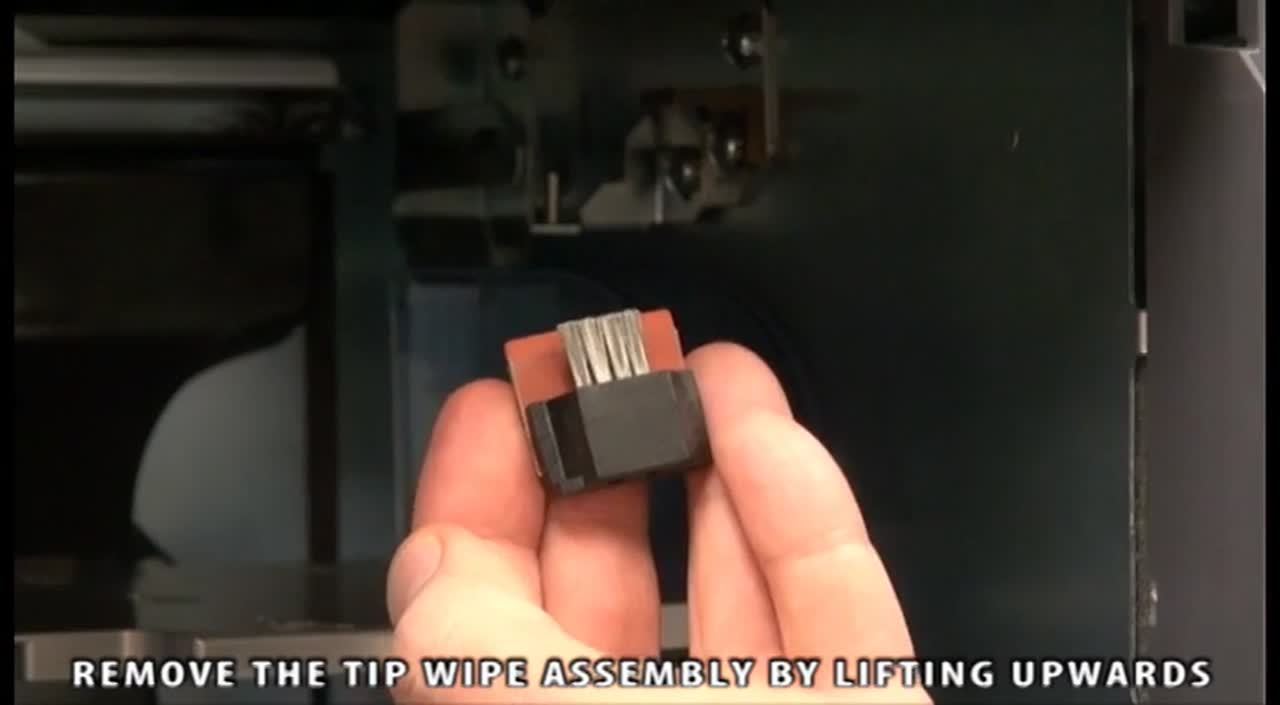I keep getting this error when trying to print something it works fine but whenever it goes to the probes I guess their called to push down and then up it does the cycle of back and forth to rewiping to trying to probe when looking at the console it says Error Probing Failed X:-9.00 Y:-9.00 Z:5.00 E:-30.00 Count X:-905 Y:-905 Z:8000 It was working fine then all of a sudden we got this if you can please help that would great
Your nozzle may need to be carefully wiped off while warm, or your nozzle wiping pad may need to be flipped/replaced. Start there, and follow up with pictures or by reaching out to support: https://LulzBot.com/Support.
Interesting timing to this thread…
I haven’t been printing on my Taz 6 since spring of this year (roughly 6 months ago). Last material I used was Taulman 910, and I’d been having trouble with getting the nozzle clean since the wipe temp can’t be cranked past 200 °C in Cura (at least in v3.2.32, not sure if there’s been an update). Had a small project I wanted to print today, and was having a heck of a time getting the nozzle clean so I could get past probing. I spent roughly an hour cranking the nozzle temp all the way to 290 °C, wiping aggressively with paper towel and Scotch-Brite, and I still couldn’t get the probe sequence past the second washer, with the first being heavily deflected.
I know I’m not supposed to use anything metal on the nozzle, so the next most aggressive thing I could think of was (might wanna sit down for this) sandpaper. I grabbed some 320 grit, and with the nozzle at room temp, cleaned it up until I could see brass all the way around. Then I cranked the temp up and gave it a little bit more sanding until I wasn’t seeing any more material on the sanding sheet. Next probe sequence executed perfectly, zero deflection, and I’m currently happily printing away.
Now, I’ve admittedly probably scratched up the nozzle a little bit. I imagine the higher the grit the better if following this procedure, but it’s definitely at your own risk. If you’re at your wits end trying to get the nozzle clean, though, I’d say it’s worth a shot.
edit
I should probably specify that I’m using the Aerostruder head, in case it makes a difference.
To keep the nozzle clean, I brush it with a brass bristle brush right before it runs the toolhead through the wipers. This removes all the debris and film left over from the previous print. After wiping, I use a pair of tweezers to grab any strands that may have gotten stuck during wiping. Always get leveling results with zero deflection and within 0.02mm of previous levelings.
One thing to check when having leveling problems is the X gantry. If the gantry is crooked and the toolhead moves up and away from the bed as it moves from the left side, to the right side, this could cause leveling problems.
This is a very risky way of cleaning your nozzle. You’re free to use whatever you’d like, but using anything with conductive bristles to clean the nozzle or hot end runs the risk of shorting things out, leading to a blown fuse or even a damaged motherboard. The safest way to clean your nozzle is to use a non-conductive green or brown scrubbing pad to clean the hot end if you’re using anything sticky.
This is a great general maintenance checkup tip.
anything with conductive bristles to clean the nozzle or hot end runs the risk of shorting things out
Like what? There are no exposed electrical connections. The only wires that are around the nozzle area are the heater wires (which are also covered with a silicone sheath) and the thermostat sensor wires, but one would have to try to hit them. Even the probe wire is at the top of the heater block. Using a scrubbing pad is a good idea though. I will try that, but one of the things I really liked about the brush is that it was able to reach all around the nozzle and remove all the strings and bits that get stuck on the sides of the nozzles and bottom of the heater block. Typically just a light brushing at ~140C is all that is needed. I got the idea from other printers that do this on nozzle changes:

“Like what? There are no exposed electrical connections. The only wires that are around the nozzle area are the heater wires (which are also covered with a silicone sheath) and the thermostat sensor wires, but one would have to try to hit them.“
Trust me when I say, it can happen by accident, and boom goes your Rambo board. If you insist on using a metal brush, make sure the machine is turned off, and unplug it for extra safety.
From thread: https://forum.lulzbot.com/t/i-think-i-fried-my-taz-6-help/6715/4
While it looks like there are no exposed wires, the bristles of a wire brush will find the space between the insulation and the heater block. I’ve protected myself from these potential shorts by adding some high temperature silicone (Permatex Red RTV High Temp Gasket Maker #81160) to the wires as they enter the heater block.